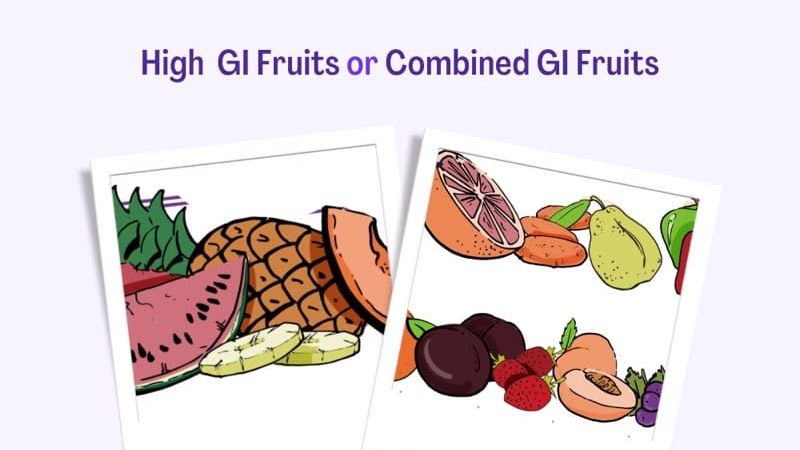

Our Review Process
Our articles undergo extensive medical review by board-certified practitioners to confirm that all factual inferences with respect to medical conditions, symptoms, treatments, and protocols are legitimate, canonical, and adhere to current guidelines and the latest discoveries. Read more.
Our Editorial Team
Shifa Fatima, MSc.
Author
Dr. Apoorva T, MHM.
MEDICAL ADVISOR
The Hype about Glycemic Index
If you are a health-conscious person who is pretty watchful of what all you eat and avoid, then you might be familiar with a much-hyped term called Glycemic Index (GI). So, if you're wondering - is the entire scene around this Glycemic index justified, or is it just another fad diet thing? Let's decipher the Glycemic code!
What do you mean by Glycemic Index?
Glycemic Index is a grading system that classifies different carbohydrate-containing foods based on how quickly or how slowly those items can make your blood glucose levels spike. The lesser the GI numbers, the better. The reason - Low GI means a lesser impact on your blood sugar levels.
Glycemic Index Grading
Decoding the GI Code
- Low GI Foods: The food items with a GI score of 55 or less contain good carbohydrates. These foods break down into glucose slowly and therefore get absorbed into your blood slowly. So, having these food items will not make your blood sugar level rise abruptly.
- Medium GI Foods: The food products with a GI score between 56 to 69 are medium GI foods. These contain carbs that convert into glucose a bit faster than that of low GI foods.
- High GI Foods: A GI score of 70 and more is a bit of a red signal. These contain carbohydrates that break down into glucose quickly, making your blood sugar shoot up all of a sudden. Also know about best fruit for diabetes.
Comparing these scores can help you choose healthier food options.
For Example - A muffin baked using refined flour has a GI score of 75, whereas a muffin made from whole wheat has a GI of 45. So, you be the judge of which one you should prefer. Whether you want to lose weight, control diabetes, or manage any other underlying lifestyle condition, choosing the right food with the right Glycemic Index is crucial.
Also read about the amount of sugar in watermelon
GI Score and its Limitations
- Glycemic Index score does not reflect the actual quantity of any given food that you would eat. It is determined in line with 100 gms of food.
- For Example - The Glycemic Index of watermelon is 80, making it a no-no fruit with high GI. However, the amount of digestible carbs in watermelon is relatively low in a standard serving. Simply put, to make our blood glucose level rise, you will have to munch on truck-loads of watermelon. How can you work through this? To accurately address this, you have to understand another term called Glycemic Load or GL. Glycemic Load is the numerical value relates to the rise in your blood glucose on eating a standard serving size.
- For Example - The GL score of 3/4th cup (120 grams) of watermelon is 5, making it a healthy food option. So, logically speaking, any food with a High GI and Low GL will NOT make your blood sugar level rise. So, you can have them without any stress.
2. It does not tell you anything about the rest of the nutritional value of a given food.
- For Example - The GI and GL of whole milk (250 ml) are 31 and 4, respectively. However, its fat content is high. Therefore, it does not make the right choice for people who are on a weight loss regimen.
Read more about sugar in watermelon
Classification of Glycemic Load follows the below pattern

Here is another chart with the GI and GL scores of some common food items

When we talk about GI, people have mixed reactions. Some call it hype, while some others think it works. Choosing food items on the basis of GI or GL can help you reverse your diabetes and manage your weight provided you choose the right food because many food items that make the typical diet for weight loss contain food with low GI values. However, researchers also warn that regardless of if you want to lose weight, maintain weight, or control diabetes, you should not use the GI factor alone. You should also consider other nutritional requirements, such as fat, protein, vitamins, minerals, ensuring a well-balanced diet. If you're still unsure about what foods to choose or not choose, get in touch with any of our expert nutritionists for an insightful overview of the choices available to you.

Disclaimer
This website's content is provided only for educational reasons and is not meant to be a replacement for professional medical advice. Due to individual differences, the reader should contact their physician to decide whether the material is applicable to their case.






_1lAR9W.png)
_Z12iaBn.png)
